Delhi. Capital of India.
I’d not been to Delhi. My expectations were of a hot stuffy atmosphere, polluted and dusty air, noise, people, traffic. I expected narrow streets with stalls selling colourful spices, silks, fruit and vegetables and temples, and historic buildings.
So when we arrived in Delhi after a four and a half hour delay our taxi ride into the centre was both quiet and dark. We didn’t see much, although arriving at the Perfect Hotel in the dark, and seeing nothing but rubbish strewn across the street wasn’t very encouraging.
Morning brought a fresh view of things. Stepping into the street, you walk into a wall of heat, sound and smells. And an instant barrage of people offering tuktuk rides, tours and guides. The street is filled with small stores and carts cooking food and chai, and selling anything from water to saris. We’re heading for the metro to go to Old Delhi, only 200 meters away but after only a few meters were ‘befriended’ by a tout trying to gets us to an agency to buy tours.
Buying a ticket for the metro was relatively easy. Except paying (no card machines seem to work in India…).
A brief diversion. Security in India is a very serious subject and understandable considering the number of assassinations and terrorist attacks over the years. At airports, you can’t get in without a valid ticket to fly. And once in you can’t leave. If you do leave, you can’t get back in. Even if you’ve just arrived and your bags are inside still. You have to scan your bags and have them tagged before you check them in (only to be scanned again) and everybody undergoes a body search (men and women in separate lines).
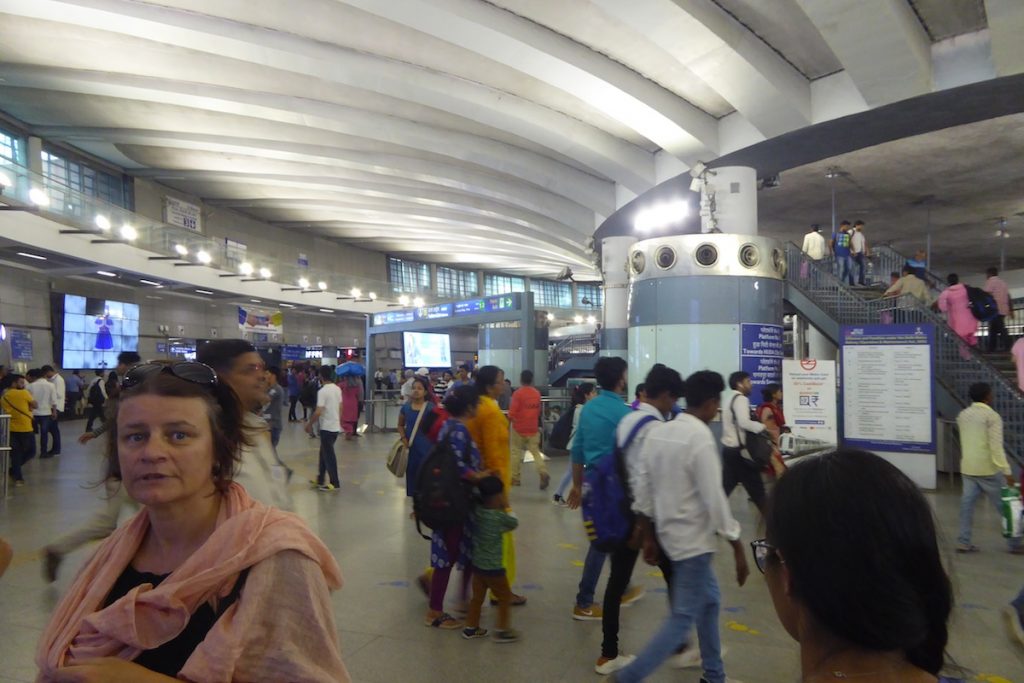
Similar security exists on the metro. Your bags are scanned and you are searched before you can get in and this applies at rush hour too, when queues grow as it gets busier.
I can honestly say that I’ve been searched more times in three days in Delhi than in the rest of my life…
Once in though, the metro is an oasis of calm; clean, efficient and air conditioned. One change and a few minutes later we alight at Chandni Chowk, the stop for Old Delhi.
Outside its back to bedlam. But multiplied by ten.
My expectations of polluted and dusty air were exceeded. And the noise. Indian drivers use their horn incessantly. I think it’s like an extra sense for them. Everybody hoots at everything: other cars/rickshaws/motorbikes/cycle rickshaws/busses/trucks/cows/dogs/people. And with 20 million people in Delhi (most of them seemingly in Old Delhi), that adds up to a lot of hooting. But it’s not just the traffic, the babble of voices increases in volume to be heard above the traffic noise, and add the noise of the traffic itself and you get a wall of sound that makes thinking hard. The smell hits you too. Some aromas are pleasant (the food cooking, incense and the scent of flowers), others not so (cow pats, drains, rotting food, piles of rubbish, urine from the street corner urinals). You have to just get past the bad smells as quickly as possible.
We were just wanting to get a feel for Delhi so we walked towards the Red Fort down a major step treet, Chandni Chowk itself as it turns out. (For an idea about life as a pedestrian see our other post, The Road is King).
It’s really hard to describe Delhi. I’ve mentioned the traffic and the noise. People are everywhere, some who seem to have a mission to accomplish, others sitting around watching. And begging of course. Disabled people, women with babies, naked children in the street. Hard as it is you have to turn a blind eye, giving anything would create mayhem. And our guide told us later that giving to disabled people makes them a target and they get robbed on the street. There is also organised begging when women and babies are sent out but money gets taken from them and they are left with nothing. It’s a terrible situation, and one that’s impossible to be unmoved by.

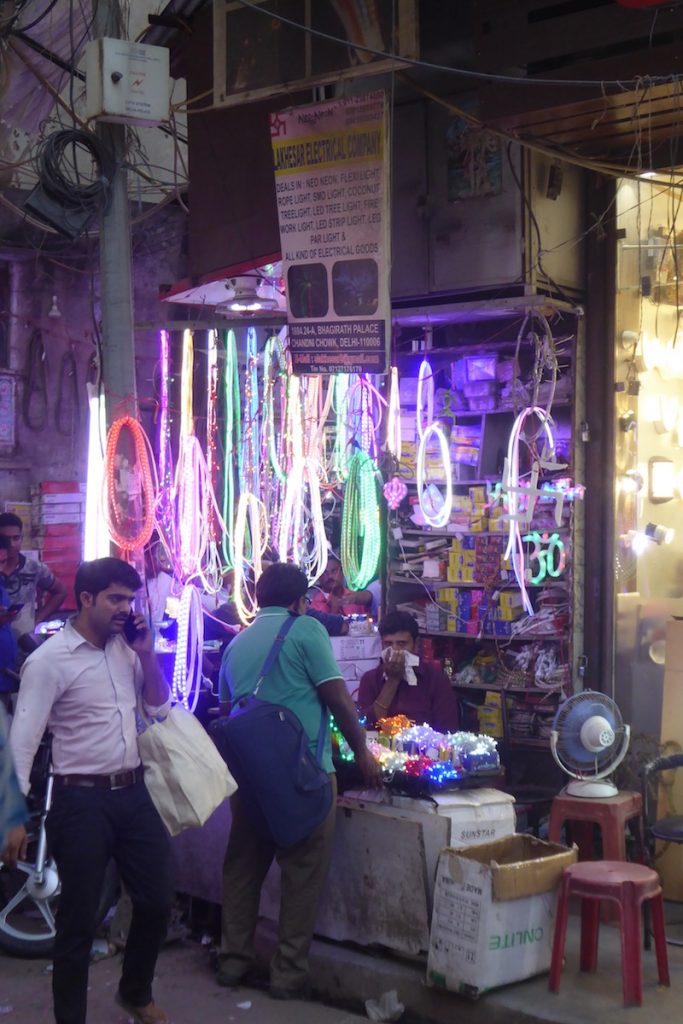
Having (almost) reached the Red Fort, we decided to head back through the market toward the station.
Markets (and shops) in Delhi seem to follow a different pattern than in Europe. All similar shops are grouped together. So when we entered the incredibly narrow alleyways (still containing people/cycles/rickshaws/motorbikes/cows) we first entered the world of electronics: TVs, speakers, fridges, everything really. Then lighting shops. Then we got fed up with dodging people carrying massive boxes on their heads and headed back towards the calm(!) of the Main Street.
Which turned out to be a good move.
As we emerged from the alleys, we could hear music and drums playing. On the street was a parade. Floats with people dressed as deities, others walking ahead playing music and dancing. I think it was a parade to celebrate the god Durga. Colourful and noisy, this was more like the kind of Delhi I’d hoped to see some of.
Incredibly, traffic still tried to pass the parade, squeezing past the increasing numbers of people gathering in the road to watch. (I was surprised at how few ‘Western’ faces there were in the crowd, I think we only saw one other man amongst the throng).
After the parade ended, we continued back to the metro (more body searches), and back towards the hotel.
Getting off the metro, it was dark and the scene had been transformed from earlier. The market was in full swing, and instead of everything looking grey and drab and dirty the lights emphasised the colours on the clothes of the women and the fabrics in the shops. Smells of street food compete successfully with the smells of cow pats and drains and the atmosphere is now more vibrant with people our shopping, eating and worshipping.
We spend a few minutes ambling along the street. I could have bought many designer clothes there for only a few hundred rupees but I managed to control myself.
In the hotel, our tour leader for our Rajasthan tour was in reception. We weren’t supposed to meet until the next day but Sanjeev introduced himself and we had a quick chat, got a recommendation for dinner and went out again. The restaurant was only a couple of minutes walk, and bizarrely we sat down at a table only to find ourselves next to a Glaswegian accented Indian and his wife who were on holiday and shopping for their son’s upcoming wedding.
As there are so many sights to see in Delhi, we arranged (through Sanjeev) to have a guide for a day with one of our fellow travellers Tony, an Aussie.
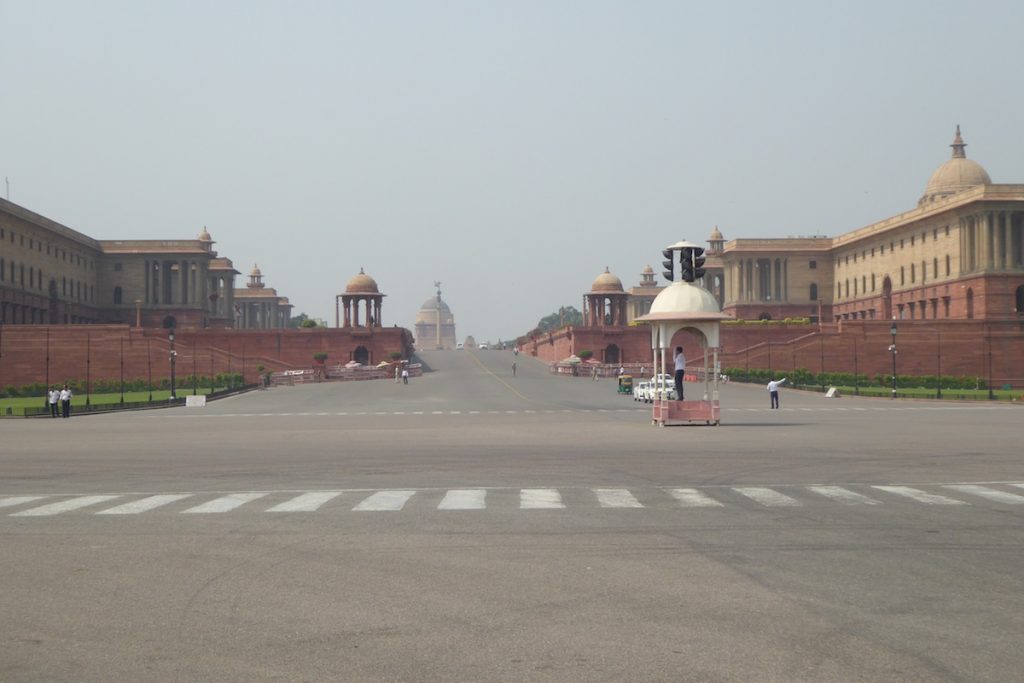
So the next day we headed out to see The President’s House, India Gate, and old step well (a traditional Indian building used for collecting water), the Red Fort and concluding with a walking food tour to sample some of the street food.
We experienced Indian security at its finest again outside the President’s house as we were shooed out of the area as he was coming back from somewhere. We didn’t see him though, he used another entrance.
That whole area (New Delhi) is so far removed from Old Delhi you could be on another planet. The area between the President’s house and India gate is more like being in Paris, along the Champs Elyseé up to L’Arc de Triomph.

The 14th century, Agrasen ki Baoli step well, an historic old building and one of few step wells in Delhi is well out of place. Its 108 steps down into the cool (and now stagnant) water at the bottom contrasts starkly with the backdrop of modern tower blocks and apartment buildings.
So to the famous Red Fort itself.
I think I was a bit disappointed. Outside is spectacular, massive red sandstone walls, towers and gateways, but inside feels a bit shabby. To be fair, much of the inside was destroyed by the British when they used the fort as an army barracks. They cleared some of the old buildings to build the barracks, and there is extensive restoration work taking place on many of the original palaces and buildings.
The old buildings are (or will be) beautiful, but you just feel that the grandeur and opulence of yesteryear has been lost some how.
The walking tour took us to some very non touristy areas, places we never would have gone to on our own. I like that, it’s a chance to glimpse a little of real day to day life, not just the tourist hotspots. The food was good, we had all sorts of things I can’t remember the names of, both savoury and (very) sweet. Our last, and unscheduled, stop was a look inside a temporary temple being constructed for Dussehra, the next Hindu festival celebrating celebrating the victory of the Hindu god Rama over the demon-king Ravana and the triumph of good over evil. Rows of seats stretching back along the street give an idea of just how many people will be out celebrating. This is just one small area in a very large city.
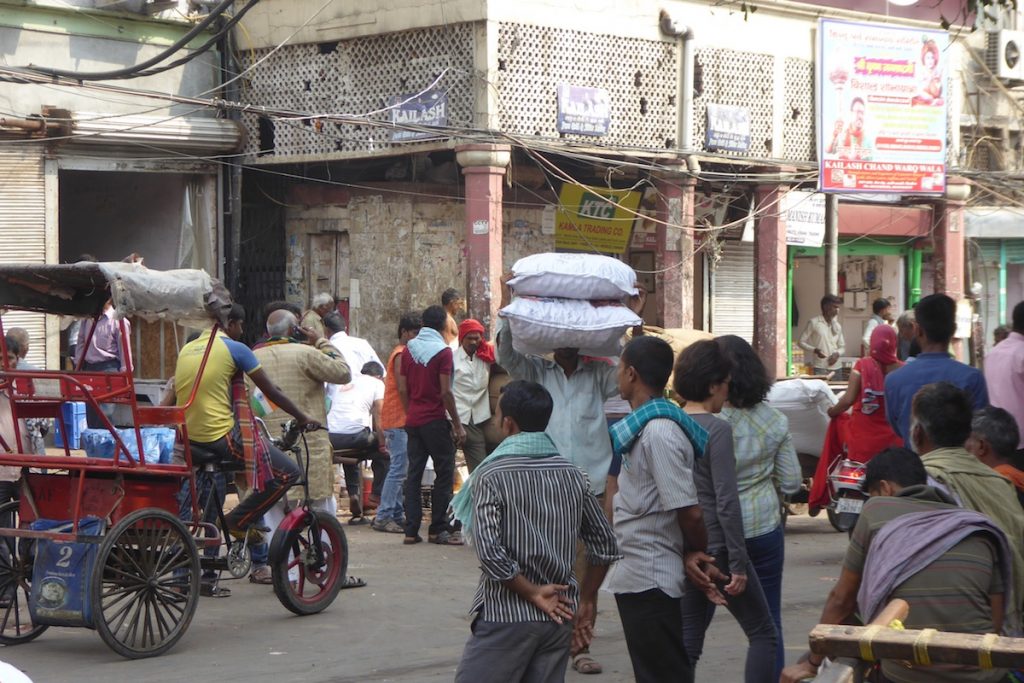
We joined the tour group meeting (albeit a bit late) back at the hotel and met our fellow travelling companions for the next three weeks: Tony (Aussie from Melbourne who we’d been with all day), Jaqui (Scot from Bournemouth), Maria (Canadian from Toronto), Lee (Aussie from Sydney), Micheal (English from London), Rachael (English from Derby), and Brian (American from Iowa). More about them later no doubt.
Next day was to be our last in Delhi for now, and would involve a walking tour of Old Delhi before heading to the station for our nineteen hour overnight trail to Jaisalmer.
Out early, before rush hour (between 9 and midday apparently) we head back on the metro to Old Delhi. It’s familiar to us now, and we meander through the back streets, still crammed with everything mentioned earlier to our first destination, the Jama Masjid, India’s largest mosque capable of holding up to 25,000 people started in 1664 and taking 14 years to complete.
The Sisganj Gurdwara, an 18th century Sikh Temple was a completely different experience. Inside people were worshipping, and singing was being blasted out through two large speakers. Gold a colour abound, with people kneeling and praying or sitting around the periphery. The Sikh men have magnificent beards.
The final part of out Old Delhi Tour was a tour through more of the streets and alleys we’d experienced on our first day. This time however we were in the area of sari trim, and saris and then on to a spice store.
I guess Delhi was pretty much what I’d expected to find. Except it was more noisy and more dirty. I think I’d expected markets to be more like we’d seen in Mysuru, vibrant and colourful with all of the accompanying sounds and aromas. But they were narrow alleys filled will motor bikes, tuktuks and cows. And crammed with people. It was quite claustrophobic at times.
The temples and historic buildings were there, but they too seemed a little sad at times. Maybe they also tire of the incessant noise and hubbub of Old Delhi. The New Delhi area was a complete contrast though and something I’d not fully anticipated.
Either way, we’d survived the chaos, and one last, painfully slow, taxi ride would see us boarding our train to Jaisalmer. The Golden City.
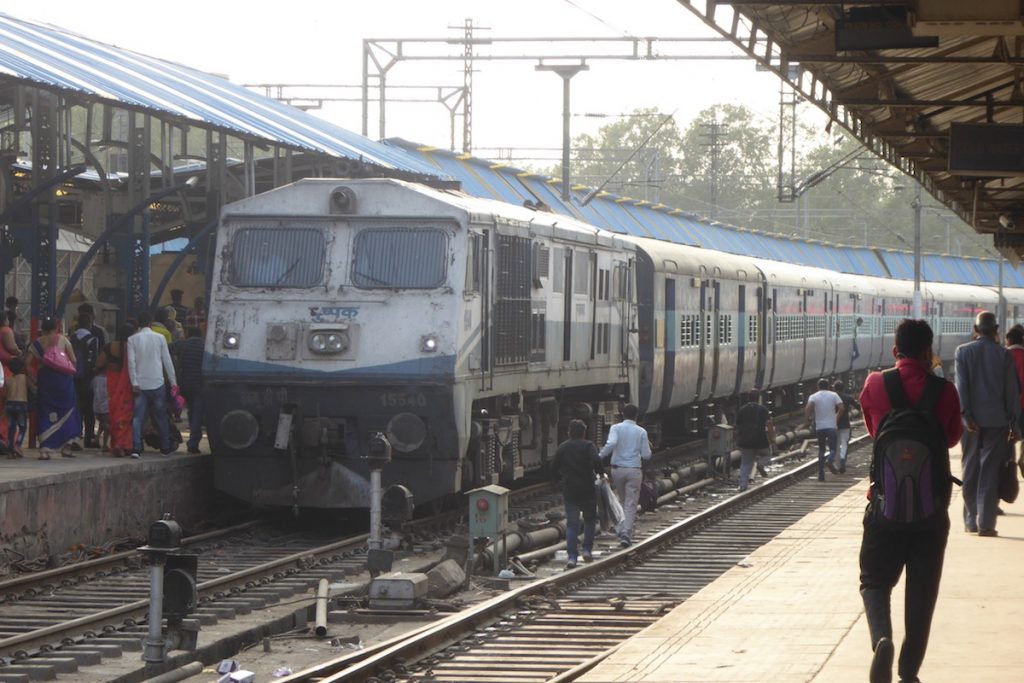
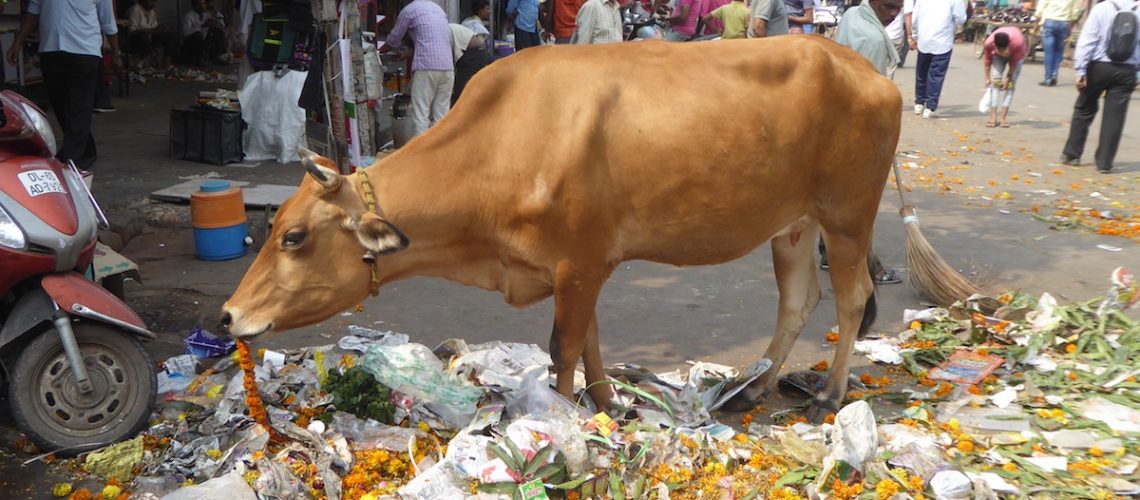
3 thoughts on “Onward to Delhi 🇮🇳”
Pingback: Rajasthan, the land of kings – The Big Tour
I totally agree with Andy…..good enough to publish…..”A year around the World” by…………
Keep ‘em coming!,
Mum& Dad xx.
What a magnificent account of your Indian experience Helen!!
You guys should write a book after your journey ends… will put ‘The Lonely Planet’ guides to shame!!
Thanks for sharing xxx